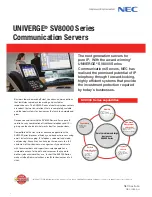
6.
Press the handle down by pushing on the blue touch points and sliding the handle lock until it clicks into the locked
position.
NOTE: If the memory riser is not aligned with the riser guide, the memory riser will not slide smoothly into the
slot. If the memory riser handle does not move down, check if the memory riser is properly seated in the
memory-riser guide. The handle gets locked only when the memory riser is seated in the connector.
7.
Close the system.
8.
Reconnect the system to its electrical outlet and turn the system on, including any attached peripherals.
Removing Memory Modules From The Memory Riser
WARNING: The memory modules are hot to the touch for some time after the system has been powered down.
Allow time for the memory modules to cool before handling them. Handle the memory modules by the card edges
and avoid touching the components or metallic contacts on the memory module.
CAUTION: Many repairs may only be done by a certified service technician. You should only perform
troubleshooting and simple repairs as authorized in your product documentation, or as directed by the online or
telephone service and support team. Damage due to servicing that is not authorized by Dell is not covered by your
warranty. Read and follow the safety instructions that came with the product.
CAUTION: To ensure proper system cooling, memory-module blanks must be installed in any memory socket that
is not occupied. Remove memory-module blanks only if you intend to install memory modules in those sockets.
1.
Turn off the system, including any attached peripherals, and disconnect the system from the electrical outlet and
peripherals.
2.
Open the system.
3.
Locate and remove the memory risers. See
Removing a Memory Riser
.
4.
To open the memory riser:
a. Push the DIMM release tabs on the memory riser in the direction of the arrows.
b. Open the memory riser cover.
50
















































